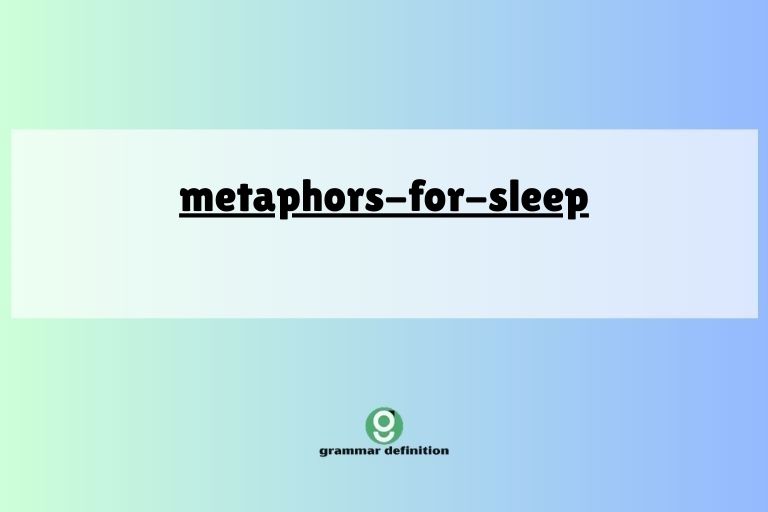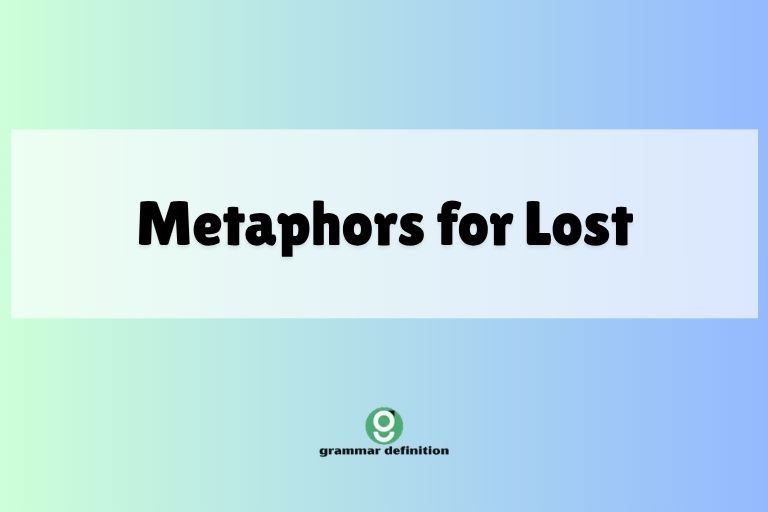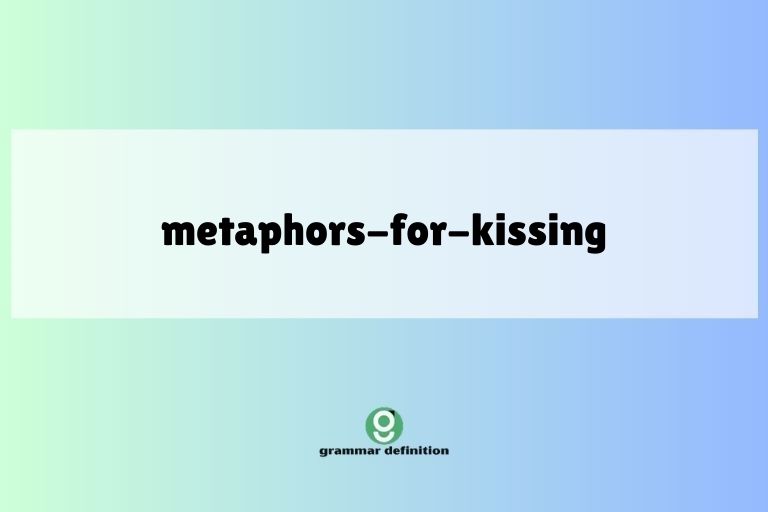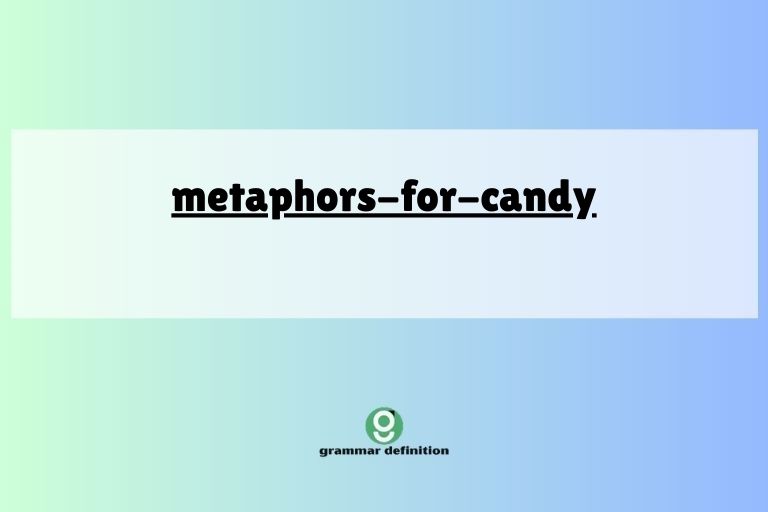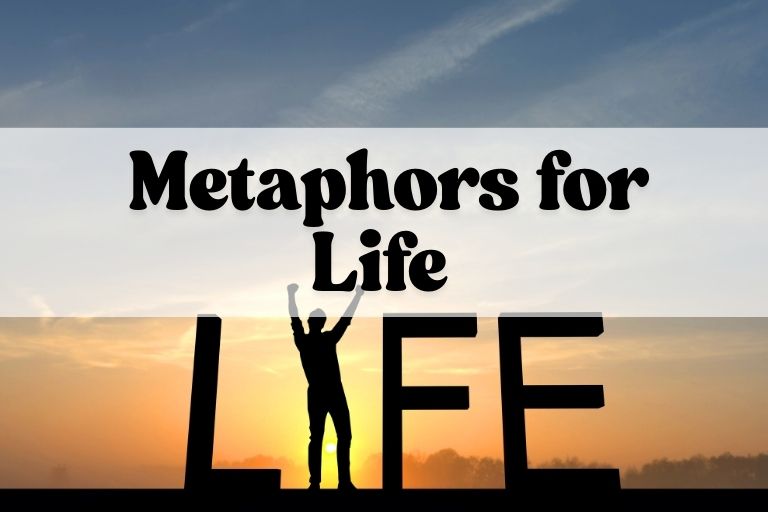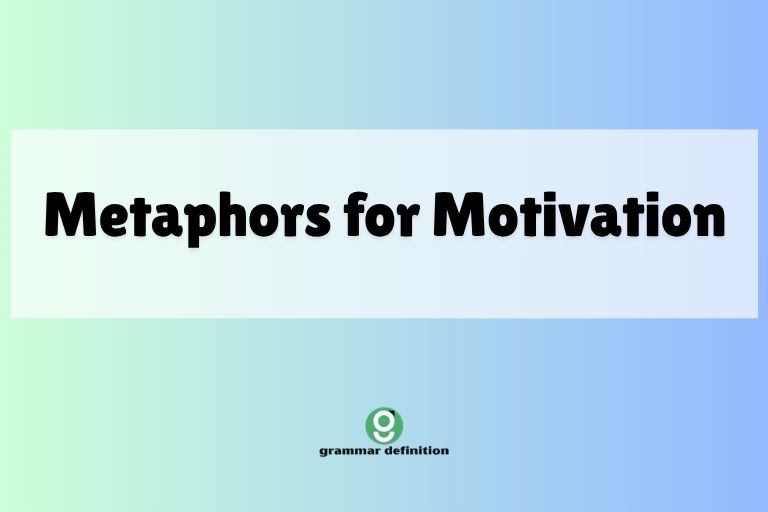Metaphors About Myself: Understanding Self-Descriptive Figures of Speech
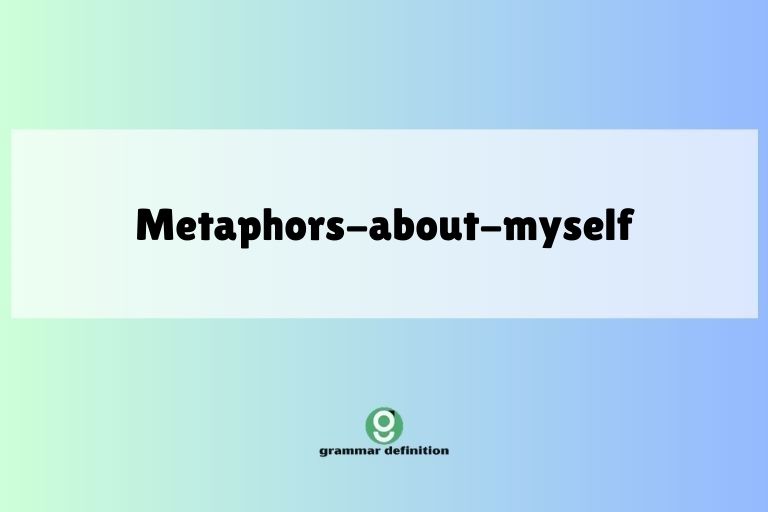
Metaphors are powerful tools that transcend literal language, allowing us to express complex ideas and emotions in vivid and relatable ways. When used to describe ourselves, metaphors can offer profound insights into our personalities, experiences, and perspectives.
Understanding how to identify, interpret, and even create metaphors about oneself is invaluable for enhancing self-awareness, improving communication, and enriching creative expression. This article provides a comprehensive guide to metaphors about oneself, covering their definition, structure, types, usage rules, common mistakes, and practical exercises.
Whether you’re a student, writer, or simply someone interested in personal growth, this exploration of self-descriptive metaphors will equip you with the knowledge and skills to unlock a deeper understanding of yourself and the world around you.
Table of Contents
- Introduction
- Definition of Metaphors About Myself
- Structural Breakdown of Self-Descriptive Metaphors
- Types and Categories of Self-Descriptive Metaphors
- Examples of Metaphors About Myself
- Personality Metaphor Examples
- Emotional State Metaphor Examples
- Life Journey Metaphor Examples
- Aspirational Metaphor Examples
- Usage Rules for Self-Descriptive Metaphors
- Common Mistakes When Using Self-Descriptive Metaphors
- Practice Exercises
- Advanced Topics in Self-Descriptive Metaphors
- Frequently Asked Questions
- Conclusion
Definition of Metaphors About Myself
A metaphor is a figure of speech that directly compares two unrelated things, asserting that one thing is the other. Unlike similes, which use “like” or “as” to make comparisons, metaphors create a more implicit and imaginative connection. When we use metaphors about ourselves, we’re employing this figurative language to describe our personality, emotions, experiences, or aspirations in terms of something else. These metaphors offer a fresh perspective on our identity, going beyond literal descriptions to reveal deeper truths and nuanced understanding.
The function of a metaphor about oneself is multifaceted. Firstly, it allows for more evocative and engaging communication, making our self-descriptions more interesting and memorable.
Secondly, it can reveal aspects of ourselves that are difficult to articulate directly, providing a symbolic representation of complex inner states. Lastly, it serves as a powerful tool for self-reflection, prompting us to consider our traits and experiences from a new angle, fostering personal growth and self-acceptance.
The context in which self-descriptive metaphors are used can vary widely, from casual conversations and personal journaling to creative writing and therapeutic settings. The key is to choose metaphors that resonate authentically and accurately reflect the intended meaning.
Structural Breakdown of Self-Descriptive Metaphors
Understanding the structure of self-descriptive metaphors involves recognizing the two key elements at play: the tenor and the vehicle. The tenor is the subject being described – in this case, oneself or a specific aspect of oneself. The vehicle is the object or concept used to represent the tenor. The effectiveness of a metaphor depends on the connection between the tenor and the vehicle. A strong metaphor creates a clear and insightful link, highlighting shared qualities or characteristics. Let’s break down how this works:
First, identify the aspect of yourself you want to describe. This could be your personality, your current emotional state, a significant life event, or your future aspirations.
This is the tenor. Next, brainstorm objects, concepts, or images that share qualities with that aspect of yourself.
This is the vehicle. Finally, construct a sentence that equates the tenor to the vehicle, creating the metaphorical statement.
For example, if you want to describe yourself as resilient, you might use the metaphor “I am a willow tree in the wind,” where “I” is the tenor and “a willow tree in the wind” is the vehicle. The shared quality is the ability to bend without breaking.
Here’s a table illustrating the structural breakdown with further examples:
| Metaphor | Tenor (Self) | Vehicle (Comparison) | Shared Quality |
|---|---|---|---|
| I am a tightly wound spring. | My personality | A tightly wound spring | Potential energy, pent-up tension |
| I am a turbulent sea. | My emotional state | A turbulent sea | Unpredictable, overwhelming emotions |
| My life is a winding road. | My life journey | A winding road | Uncertainty, unexpected turns |
| I am a lighthouse in the storm. | My aspirational self | A lighthouse | Guidance, hope, stability |
| I am a sponge soaking up knowledge. | My learning process | A sponge | Absorbing information quickly |
| I am a mosaic, pieced together from experiences. | My identity | A mosaic | Complex, diverse, beautiful |
| I am a marathon runner, not a sprinter. | My approach to goals | A marathon runner | Endurance, long-term focus |
| I am a blooming flower. | My personal growth | A blooming flower | Development, beauty, potential |
| I am a chameleon, adapting to my surroundings. | My adaptability | A chameleon | Flexibility, resourcefulness |
| I am a book with many unread chapters. | My future | A book with unread chapters | Potential, mystery, untold stories |
| I am a roaring fire when I am angry. | My anger | A roaring fire | Destructive, powerful, intense |
| I am a fragile vase, easily shattered. | My vulnerability | A fragile vase | Delicacy, susceptibility to damage |
| I am a sturdy oak tree, rooted in my values. | My core beliefs | A sturdy oak tree | Strong, unwavering, dependable |
| I am a tangled web of insecurities. | My self-doubt | A tangled web | Confusion, complexity, entrapment |
| I am a blank canvas, ready to be painted. | My potential | A blank canvas | Opportunity, creativity, possibility |
| I am a compass, always seeking true north. | My purpose | A compass | Direction, guidance, clarity |
| I am a river, constantly flowing and changing. | My life | A river | Movement, evolution, transformation |
| I am a shield, protecting myself from harm. | My defense mechanisms | A shield | Protection, security, resilience |
| I am a telescope, seeking a broader perspective. | My curiosity | A telescope | Exploration, discovery, insight |
| I am a clock, ticking away the moments of my life. | My mortality | A clock | Time, transience, urgency |
| I am a phoenix, rising from the ashes. | My ability to overcome adversity | A phoenix | Resilience, rebirth, transformation |
| I am a puzzle, still trying to find all my missing pieces. | My self-discovery journey | A puzzle | Complexity, challenge, the search for wholeness |
| I am a tightrope walker, balancing my responsibilities. | My daily life | A tightrope walker | Balance, focus, risk |
| I am an old photograph, faded but full of memories. | My past | An old photograph | Nostalgia, history, reflection |
Types and Categories of Self-Descriptive Metaphors
Self-descriptive metaphors can be categorized based on the aspect of the self they aim to describe. Understanding these categories can help you identify and create more targeted and effective metaphors.
Personality Metaphors
These metaphors describe your core character traits, tendencies, and behavioral patterns. They often use animals, objects, or natural phenomena to represent these aspects of your personality.
Emotional State Metaphors
These metaphors express your current feelings, moods, and emotional responses. They often use weather patterns, colors, or abstract concepts to convey the intensity and nature of these emotions.
Life Journey Metaphors
These metaphors describe your life experiences, challenges, and overall path. They often use roads, landscapes, or journeys to represent the different stages and aspects of your life.
Aspirational Metaphors
These metaphors express your goals, dreams, and the person you aspire to become. They often use symbols of achievement, growth, or transformation to represent these aspirations.
Examples of Metaphors About Myself
To further illustrate the different categories of self-descriptive metaphors, here are some comprehensive example tables.
Personality Metaphor Examples
This table showcases metaphors used to describe various personality traits.
| Metaphor | Explanation |
|---|---|
| I am a social butterfly. | Describes someone who is outgoing, friendly, and enjoys socializing. |
| I am a lone wolf. | Describes someone who prefers solitude and independence. |
| I am a steady ship. | Describes someone who is reliable, stable, and dependable. |
| I am a ticking time bomb. | Describes someone who is easily angered or stressed. |
| I am a walking encyclopedia. | Describes someone who is very knowledgeable and well-informed. |
| I am a blank slate. | Describes someone who is open to new experiences and easily influenced. |
| I am a tough nut to crack. | Describes someone who is difficult to understand or get to know. |
| I am a ray of sunshine. | Describes someone who is cheerful, optimistic, and brings joy to others. |
| I am a night owl. | Describes someone who is most active and alert at night. |
| I am an early bird. | Describes someone who is most active and alert in the morning. |
| I am a gentle breeze. | Describes someone who is calm, peaceful, and unobtrusive. |
| I am a raging storm. | Describes someone who is intense, passionate, and can be overwhelming. |
| I am a deep well. | Describes someone who has hidden depths and inner resources. |
| I am a shallow puddle. | Describes someone who lacks depth and substance. |
| I am a free spirit. | Describes someone who is independent, unconventional, and follows their own path. |
| I am a workhorse. | Describes someone who is hardworking, diligent, and reliable. |
| I am a chameleon. | Describes someone who adapts easily to different situations and environments. |
| I am a rock. | Describes someone who is strong, stable, and a source of support for others. |
| I am a wilting flower. | Describes someone who is losing their energy, vitality, or enthusiasm. |
| I am a curious cat. | Describes someone who is inquisitive, adventurous, and always seeking new experiences. |
| I am a quiet mouse. | Describes someone who is shy, timid, and reserved. |
| I am a busy bee. | Describes someone who is always active, productive, and engaged in multiple tasks. |
| I am a wise owl. | Describes someone who is knowledgeable, insightful, and offers good advice. |
| I am a shining armor. | Describes someone who is brave, protective, and willing to defend others. |
Emotional State Metaphor Examples
This table provides metaphors to express various emotional states.
| Metaphor | Explanation |
|---|---|
| I am on cloud nine. | Describes a state of extreme happiness and euphoria. |
| I am drowning in sorrow. | Describes a state of overwhelming sadness and despair. |
| I am walking on eggshells. | Describes a state of anxiety and fear of upsetting someone. |
| I am a volcano about to erupt. | Describes a state of suppressed anger and frustration. |
| I am lost in a fog. | Describes a state of confusion and uncertainty. |
| I am a tightly coiled spring. | Describes a state of tension and anticipation. |
| I am frozen with fear. | Describes a state of intense fear that paralyzes you. |
| I am burning with passion. | Describes a state of intense enthusiasm and excitement. |
| I am a blank page. | Describes a state of emotional numbness or emptiness. |
| I am a rollercoaster of emotions. | Describes a state of rapidly changing and intense emotions. |
| I am a ship lost at sea. | Describes a state of feeling directionless and without purpose. |
| I am a shadow of my former self. | Describes a state of feeling diminished and weakened. |
| I am a caged bird. | Describes a state of feeling trapped and restricted. |
| I am a weightless feather. | Describes a state of feeling carefree and lighthearted. |
| I am a dark cloud. | Describes a state of feeling gloomy and pessimistic. |
| I am a beacon of hope. | Describes a state of feeling optimistic and inspiring. |
| I am a raging fire. | Describes a state of feeling intensely angry or passionate. |
| I am a gentle rain. | Describes a state of feeling calm, soothing, and peaceful. |
| I am a wounded animal. | Describes a state of feeling vulnerable and hurt. |
| I am a blooming garden. | Describes a state of feeling happy, vibrant, and full of life. |
| I am a barren desert. | Describes a state of feeling empty, desolate, and devoid of emotion. |
| I am a tangled knot. | Describes a state of feeling confused, stressed, and overwhelmed. |
| I am a clear stream. | Describes a state of feeling calm, clear-headed, and at peace. |
| I am a silent scream. | Describes a state of feeling intense emotion that is not outwardly expressed. |
Life Journey Metaphor Examples
This table illustrates metaphors describing one’s life path and experiences.
| Metaphor | Explanation |
|---|---|
| My life is a rollercoaster. | Describes a life filled with ups and downs, excitement and challenges. |
| My life is a marathon, not a sprint. | Describes a life that requires endurance, patience, and long-term focus. |
| My life is a winding road. | Describes a life with unexpected turns, detours, and uncertainties. |
| My life is a blank canvas. | Describes a life full of potential, possibilities, and opportunities to create. |
| My life is a puzzle. | Describes a life that is complex, challenging, and requires piecing together different elements. |
| My life is a book with many chapters. | Describes a life with different stages, experiences, and stories to be told. |
| My life is a tapestry. | Describes a life woven together from different experiences, relationships, and events. |
| My life is a garden. | Describes a life that requires nurturing, care, and attention to grow and flourish. |
| My life is a river. | Describes a life that is constantly flowing, changing, and evolving. |
| My life is a mountain to climb. | Describes a life filled with challenges, obstacles, and the need for perseverance. |
| My life is a symphony. | Describes a life that is harmonious, balanced, and filled with different elements working together. |
| My life is a dance. | Describes a life that requires rhythm, grace, and coordination. |
| My life is a movie. | Describes a life filled with drama, adventure, and memorable moments. |
| My life is a play. | Describes a life with different roles, characters, and scenes to be acted out. |
| My life is a game of chess. | Describes a life that requires strategy, planning, and careful decision-making. |
| My life is a tightrope walk. | Describes a life that requires balance, focus, and careful navigation. |
| My life is a voyage. | Describes a life filled with exploration, discovery, and new experiences. |
| My life is a battle. | Describes a life filled with struggles, challenges, and the need for resilience. |
| My life is a song. | Describes a life filled with melody, harmony, and emotional expression. |
| My life is a story waiting to be written. | Describes a life full of potential, possibilities, and the opportunity to create your own narrative. |
| My life is a climb. | Describes a life of constant uphill struggles to reach a summit. |
| My life is a tempest. | Describes a life filled with chaos, storms, and turbulence. |
| My life is a beacon. | Describes a life dedicated to guiding and inspiring others. |
| My life is a classroom. | Describes a life of constant learning and growth. |
Aspirational Metaphor Examples
This table provides metaphors that express one’s hopes, dreams, and goals.
| Metaphor | Explanation |
|---|---|
| I want to be a lighthouse. | Expresses a desire to guide and inspire others. |
| I want to be a bridge. | Expresses a desire to connect people and build understanding. |
| I want to be a seed that grows into a mighty tree. | Expresses a desire for personal growth and development. |
| I want to be a phoenix rising from the ashes. | Expresses a desire to overcome adversity and emerge stronger. |
| I want to be a star that shines brightly. | Expresses a desire to achieve greatness and recognition. |
| I want to be a river that flows freely. | Expresses a desire for freedom, flexibility, and adaptability. |
| I want to be a compass that guides others. | Expresses a desire to provide direction and support. |
| I want to be a shield that protects the vulnerable. | Expresses a desire to defend and advocate for others. |
| I want to be a voice for the voiceless. | Expresses a desire to speak up for those who are marginalized or oppressed. |
| I want to be a catalyst for change. | Expresses a desire to initiate positive transformation. |
| I want to be a beacon of hope in the darkness. | Expresses a desire to inspire optimism and resilience. |
| I want to be a wellspring of creativity. | Expresses a desire to generate new ideas and innovations. |
| I want to be a force for good in the world. | Expresses a desire to make a positive impact on society. |
| I want to be a pillar of strength for my family. | Expresses a desire to provide support and stability. |
| I want to be a master of my own destiny. | Expresses a desire for control and autonomy over one’s life. |
| I want to be a peacemaker. | Expresses a desire to resolve conflicts and promote harmony. |
| I want to be a healer. | Expresses a desire to help others overcome their pain and suffering. |
| I want to be a teacher who inspires lifelong learning. | Expresses a desire to impart knowledge and foster curiosity. |
| I want to be a leader who empowers others. | Expresses a desire to motivate and support people in achieving their goals. |
| I want to be an artist who creates beauty. | Expresses a desire to express oneself through creative endeavors. |
| I want to be a gardener who nurtures growth. | Expresses a desire to cultivate and develop potential in others. |
| I want to be an explorer who discovers new horizons. | Expresses a desire for adventure, discovery, and personal growth. |
| I want to be an innovator who challenges the status quo. | Expresses a desire to push boundaries, challenge the norm and create new possibilities. |
| I want to be a storyteller who captivates audiences. | Expresses a desire to engage people through storytelling. |
Usage Rules for Self-Descriptive Metaphors
Using self-descriptive metaphors effectively requires careful consideration of several factors. First, ensure that the metaphor is appropriate for the context. A metaphor that works well in a personal journal might not be suitable for a formal presentation. Second, the metaphor should be clear and understandable. Avoid obscure or overly complex metaphors that might confuse your audience. Third, the metaphor should be authentic and genuine, reflecting your true feelings and experiences. Forced or contrived metaphors can sound insincere.
It’s also important to consider the emotional impact of your metaphors. Some metaphors can be empowering and uplifting, while others can be negative and self-deprecating. Choose metaphors that align with your desired message and promote a positive self-image. Furthermore, be mindful of cultural differences. Metaphors can have different meanings and connotations in different cultures, so it’s essential to be aware of your audience’s background.
Here are some key rules to follow:
- Clarity: The connection between the tenor and vehicle should be easily understood.
- Relevance: The metaphor should accurately reflect the aspect of yourself you’re describing.
- Consistency: Avoid mixing metaphors that create contradictory images.
- Originality: Strive for fresh and creative metaphors that stand out.
- Sensitivity: Be mindful of the potential impact of your metaphors on others.
Common Mistakes When Using Self-Descriptive Metaphors
Several common mistakes can undermine the effectiveness of self-descriptive metaphors. One frequent error is using clichéd metaphors that have lost their impact through overuse. Instead of saying “I am a diamond in the rough,” try to come up with a more original and creative comparison. Another mistake is using mixed metaphors, which combine incompatible images and create confusion. For example, saying “I am a ship sailing through a sea of opportunities, but I’m also stuck in a rut” creates a contradictory and nonsensical image.
Another common mistake is using metaphors that are too abstract or vague. The connection between the tenor and vehicle should be clear and easily understood. Avoid metaphors that require too much interpretation or explanation. Finally, be careful not to use metaphors that are offensive or insensitive. Metaphors can be powerful, but they can also be harmful if they perpetuate stereotypes or trivialize sensitive issues.
Here’s a table illustrating common mistakes with corrections:
| Incorrect Metaphor | Explanation of Error | Corrected Metaphor |
|---|---|---|
| I am a diamond in the rough. | Clichéd and overused. | I am a hidden gem waiting to be discovered. |
| I am a ship sailing through a sea of opportunities, but I’m also stuck in a rut. | Mixed metaphors create a confusing image. | I am a ship sailing towards new horizons. |
| I am a thing. | Too abstract and vague. | I am a complex algorithm. |
| I am a ticking bomb ready to explode on everyone. | Potentially offensive and insensitive. | I am a pressure cooker, needing to release some steam. |
| I’m a lone wolf navigating the jungle of life, while also being a cog in the machine. | Mixing metaphors and using clichés. | I’m an explorer forging my own path through the wilderness. |
Practice Exercises
Test your understanding of self-descriptive metaphors with these exercises.
Exercise 1: Identifying Metaphors
Identify the metaphors in the following sentences and explain what aspects of the person they describe.
| Question | Answer |
|---|---|
| 1. She is a shining star in the company. | Metaphor: shining star. Describes her talent and success. |
| 2. He is a rock for his family. | Metaphor: rock. Describes his stability and support. |
| 3. I am a tightly wound clock. | Metaphor: tightly wound clock. Describes my stress and anxiety. |
| 4. My life is a turbulent ocean. | Metaphor: turbulent ocean. Describes the chaos and challenges in my life. |
| 5. She is a blooming flower. | Metaphor: blooming flower. Describes her growth and beauty. |
| 6. He is a raging bull when angered. | Metaphor: raging bull. Describes his intense anger. |
| 7. My mind is a tangled web of thoughts. | Metaphor: tangled web. Describes my confusion and complexity. |
| 8. She is a beacon of hope to many. | Metaphor: beacon of hope. Describes her inspiration and guidance. |
| 9. I am a sponge, soaking up all knowledge. | Metaphor: sponge. Describes my ability to learn quickly. |
| 10. His heart is a cold stone. | Metaphor: cold stone. Describes his lack of emotion. |
Exercise 2: Creating Metaphors
Create a metaphor to describe each of the following aspects of yourself:
| Aspect of Self | Your Metaphor (Possible Answer) |
|---|---|
| 1. Your creativity | A flowing river of ideas. |
| 2. Your resilience | A rubber band that always snaps back. |
| 3. Your ambition | A rocket aimed at the stars. |
| 4. Your kindness | A warm embrace. |
| 5. Your determination | A bulldozer pushing through obstacles. |
| 6. Your patience | A slow-burning candle. |
| 7. Your curiosity | A never-ending quest. |
| 8. Your vulnerability | A butterfly’s wings. |
| 9. Your strength | An unshakeable mountain. |
| 10. Your peace | A tranquil pond. |
Exercise 3: Correcting Mistakes
Identify and correct the mistakes in the following metaphors:
| Incorrect Metaphor | Corrected Metaphor (Possible Answer) |
|---|---|
| 1. I am a diamond in the rough sailing through life. | I am a hidden gem waiting to be polished. |
| 2. My emotions are a rollercoaster stuck in a rut. | My emotions are a rollercoaster with many ups and downs. |
| 3. He is a beacon of hope, but also a dark cloud. | He is a beacon of hope in the darkness. |
| 4. I’m a phoenix on cloud nine. | I am a phoenix rising from the ashes. |
| 5. She is a walking encyclopedia drowning in sorrow. | She is a walking encyclopedia, full of knowledge. |
| 6. He is the sturdy rock in the storm of life. | He is the sturdy rock weathering life’s storms. |
| 7. My dreams are a garden tangled in weeds. | My dreams are a garden waiting cultivation. |
| 8. She is a tightly coiled spring lost at sea. | She is a tightly coiled spring, full of potential energy. |
| 9. I am a chameleon, a diamond in the rough. | I am a chameleon, adept at adapting. |
| 10. His kindness is a blank canvas ready to explode. | His kindness is a warm, inviting embrace. |
Advanced Topics in Self-Descriptive Metaphors
For advanced learners, exploring the nuances of extended metaphors and the use of symbolism can further enhance your understanding. An extended metaphor is a metaphor that is developed over several lines or even an entire piece of writing. This allows for a more detailed and nuanced exploration of the comparison. Symbolism, on the other hand, involves using objects, people, or ideas to represent something else. Incorporating symbolism into your self-descriptive metaphors can add layers of meaning and complexity.
Another advanced topic is the use of archetypes. Archetypes are universal patterns of behavior and personality that are found in myths, legends, and stories across cultures. Using archetypal metaphors can tap into deep-seated
human experiences and resonate with a wider audience. Examples of archetypes include the hero, the villain, the caregiver, and the rebel. For instance, describing yourself as “a warrior facing inner demons” uses the hero archetype to convey resilience and determination.
Juxtaposition is another powerful technique. It involves placing two contrasting metaphors side by side to create a striking effect. This can highlight the complexities and contradictions within oneself. For example, “I am both a tightly wound spring and a tranquil pond” juxtaposes tension and calmness, suggesting a multifaceted personality.
Frequently Asked Questions
- Q: How do I come up with original metaphors about myself?
- A: Start by brainstorming qualities or aspects of yourself that you want to describe. Then, think of objects, concepts, or images that share those qualities. Don’t be afraid to think outside the box and experiment with different combinations. The more you practice, the easier it will become to generate original metaphors.
- Q: Can metaphors about myself be too personal or revealing?
- A: It depends on the context and your comfort level. In personal journaling or therapy, you can be as honest and revealing as you like. However, in more public settings, it’s important to consider your audience and avoid sharing information that you’re not comfortable disclosing.
- Q: How can I use metaphors about myself to improve my self-awareness?
- A: Metaphors can provide a new perspective on your thoughts, feelings, and behaviors. By exploring different metaphors, you can gain a deeper understanding of your inner world and identify patterns or tendencies that you might not have noticed before. This can lead to greater self-acceptance and personal growth.
- Q: Are there any online resources that can help me learn more about metaphors?
- A: Yes, there are many websites, articles, and books that explore the topic of metaphors in detail. Some helpful resources include literary websites, writing guides, and books on rhetoric and figurative language. Additionally, exploring poetry and literature can expose you to a wide range of metaphorical expressions.
- Q: How do I avoid using clichés when creating self-descriptive metaphors?
- A: The key is to think beyond the obvious and explore unconventional connections. Instead of relying on overused comparisons, try to find unique and specific images that resonate with your personal experiences and perspectives. The more specific and personal your metaphors are, the less likely they are to be clichés.
- Q: Can I use metaphors about myself in a resume or cover letter?
- A: Use caution. While a well-placed metaphor can make your application more memorable, it’s important to ensure that the metaphor is professional, relevant, and easy to understand. Avoid overly creative or abstract metaphors that might confuse or distract the reader. Focus on highlighting your skills and qualifications in a clear and concise manner.
- Q: How can I tell if a metaphor about myself is effective?
- A: An effective metaphor should resonate with you on a personal level and accurately reflect the aspect of yourself you’re trying to describe. It should also be clear, understandable, and engaging for your audience. If you’re unsure, ask for feedback from trusted friends or colleagues.
Conclusion
Metaphors about oneself are not just linguistic devices; they are powerful tools for self-discovery, communication, and creative expression. By understanding their structure, types, and usage rules, you can harness their potential to gain deeper insights into your own identity, connect with others on a more meaningful level, and express yourself in a more vivid and engaging way.
Whether you’re a writer, a student, or simply someone interested in personal growth, mastering the art of self-descriptive metaphors can enrich your life in countless ways. So, embrace the power of figurative language, explore the depths of your inner world, and let your metaphors shine.

